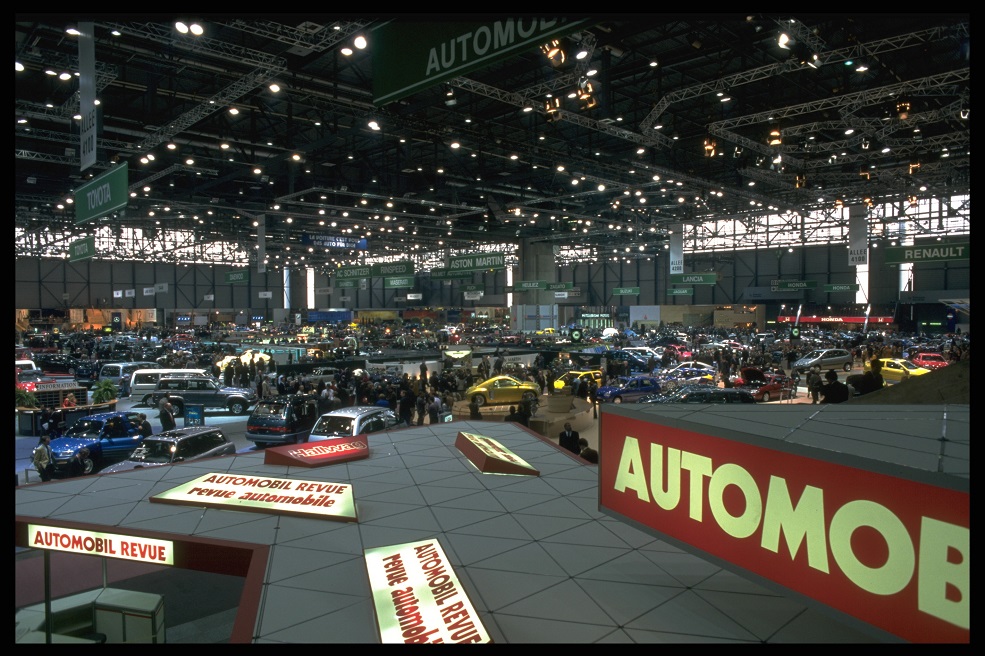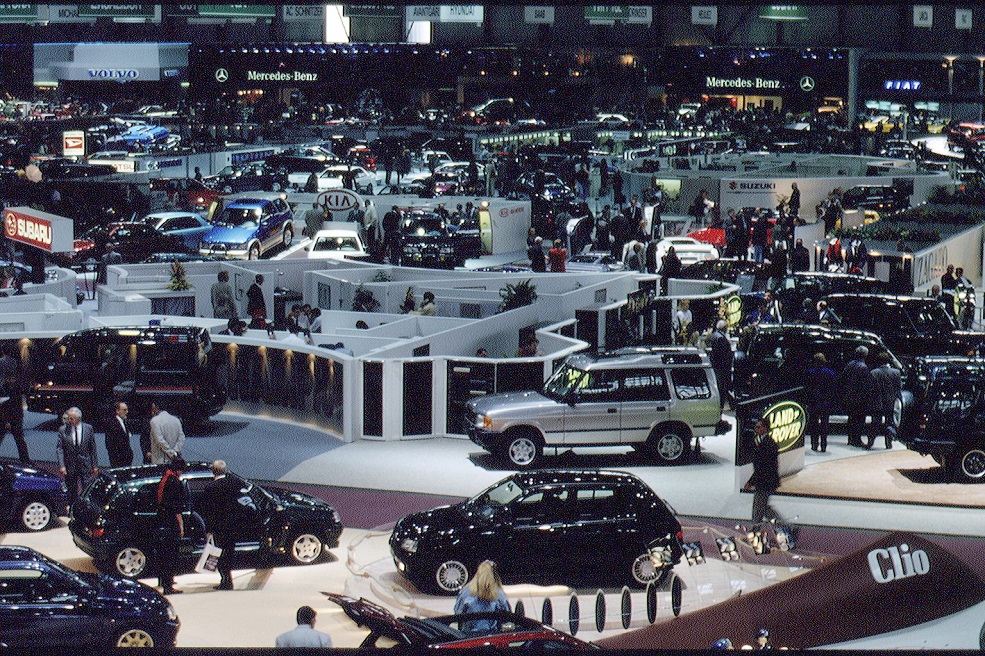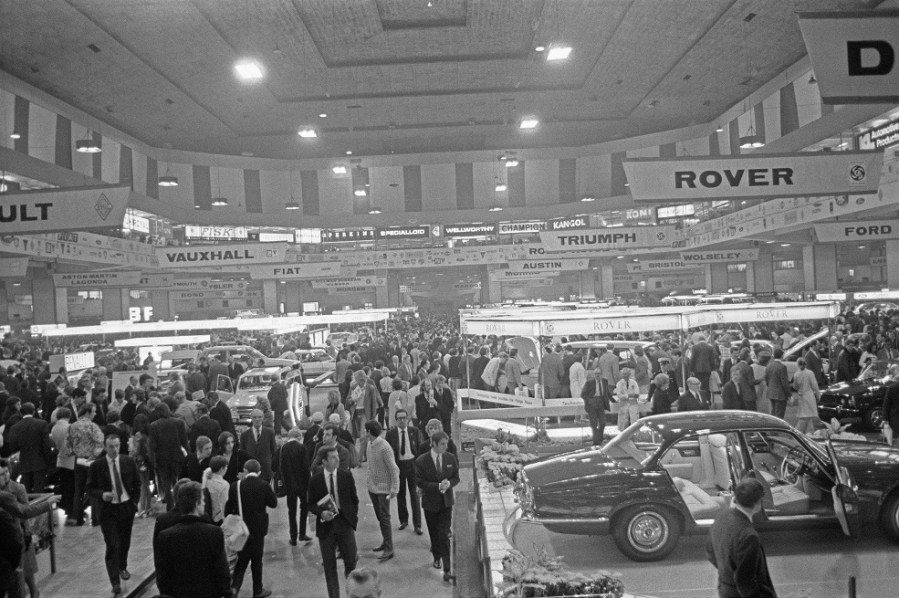With Covid-19 forcing the cancellation of a number of high profile motoring events such as the Geneva Motor Show, does it spell the end of what we’d consider the traditional motor show? We investigate.
The number of events, shows and gatherings being cancelled over the last few weeks is of course unprecedented and one of the biggest casualties was the Geneva Motor Show which would have been set for early March. Held as it is on ‘neutral’ territory in a country without a national car industry, it’s seen some significant launches over the years, including the Jaguar E-Type.
Industry commentators have speculated that this may well spell the end for the traditional motor show as car manufacturers forced to innovate by the coronavirus restrictions have turned to smaller regional unveilings, virtual launches and similar.

Geneva Motor Show 1996
In truth we haven’t had a proper international motor show in Britain since the final NEC event in 2004, the last to be organised by industry body SMMT. The glitz and spectacle of these events will be sadly missed though: after all the first British show of the modern era was the 1948 event which in the austerity-laden gloom of the postwar period gave the buying public a glimpse of a brighter future in the shape of the Jaguar XK120 and the Morris Minor.
As a child I was more fortunate that a dad working in the industry meant I was able to tag along on press day when the show was quieter and the exotica wasn’t roped off. A big motor show was always a feast of display technology, with cars featuring all kinds of hidden interior lighting, the revolving turntables ready to catch out the unwary hack after one too many free glasses of wine on press day, plus of course the army of staff wielding polishing cloths and feather dusters. At the Geneva show in the late 2000s, BMW had a full test track to debut its cars, while in earlier years the British show had featured live kangaroos on the Chrysler stand (1966) and naked models on the TVR stand in 1971.
The cars themselves were always pristine on press day but by the end of the public show were often missing several parts – things like gearknobs were often superglued in place to prevent theft. Sometimes you’d also find a car with the ignition powered up and in the late ’90s a colleague took great pride in slipping a Sex Pistols tape into the functioning stereo of a Bentley.
The stands would also be awash with press packs, brochures and all kinds of branded freebies and even now I still have a couple of pens from late ’80s NEC shows. The move to the big shed between Birmingham and Coventry was a real turning point for the British show and I remember being blown away by the size of the place when the first show was held there in 1978. Yes, the Earls Court venue had the glamour of the London location but it seemed like a village hall compared to the NEC and it allowed the British event to take on a new significance in the industry calendar.

Geneva Motor Show 1994
It’s all stood me in good stead for a career writing about cars but thinking about it today it’s the oddities which stand out. Yes, I can remember being in the audience when the Jaguar X-Type was unveiled and when Bernd Pischetsrieder made his ill-judged speech at the launch of the Rover 75, but I can remember with more clarity looking at the dashboard of the Lancia Trevi and wondering why on earth it had been designed that way. I can also remember looking at the first-generation Hyundai Pony and wondering why the assembled journalists were all talking about the Marina. Of course years later I came to understand the link between the Marina and Pony in the shape of former BL exec George Turnbull who had been tasked by the South Koreans with setting up a domestic car industry from scratch.
If the industry pundits are right and a global pandemic has killed off the traditional big shows, then car makers may well heave a sigh of relief at the cost saving but the world will be a poorer place without the massive halls and their overwhelming aroma of new car smell and fresh carpet. On the other hand, in a world ravaged by the economic toll of the Covid-19 crisis, maybe just like that 1948 event a revived international motor show is just what the public wants. Just as long as we all keep the appropriate social distance.





